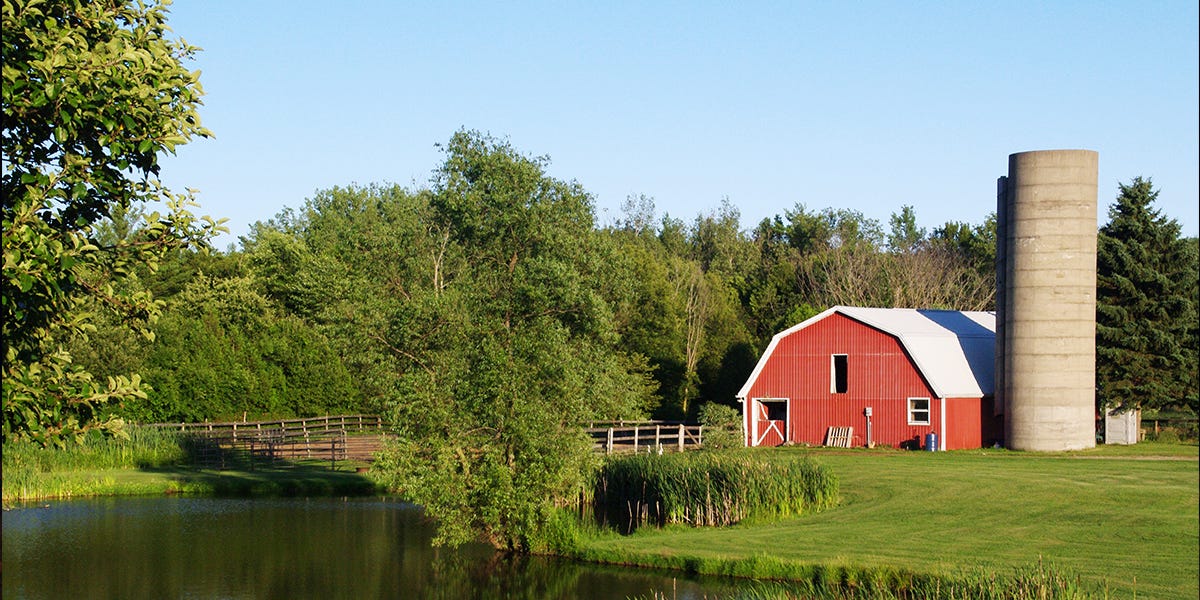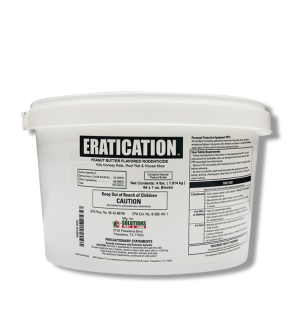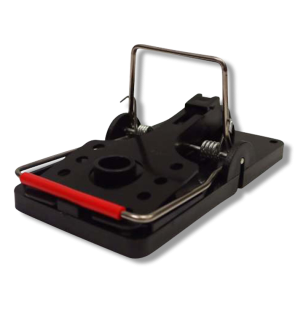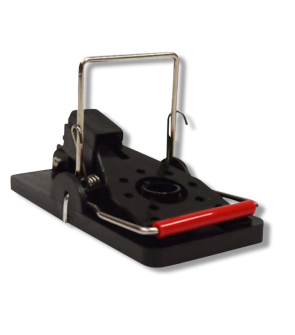Gain access to personalized product screening, the best pricing, rewards, and more!
Most Effective Products
How to Get Rid of Rats and Mice in Your Barn
This article is a general DIY guide that discusses control methods for rat and mouse infestations in and around barns. By reading our DIY guide, farmers will learn how to eliminate and prevent rat and mouse populations by following the listed steps and using professional-quality products.
If you own a farm or have outside animals, you will likely experience several encounters with rats or mice. When rodents come into your barn, they usually do not come alone. They commonly bring ticks, fleas, and other potential parasites on them. Since their foraging behavior can cause them to go through every opening, crack, crevice, and void, they will efficiently spread these parasites around and potentially to outdoor animals.
Four types of rodents are most common in barns: the Norway rat, the roof rat, the deer mice, and the house mice. In addition to spreading parasites, these rodents can damage your barn by chewing wood, storing food, chewing electrical wires and fabric or cloth-like materials, and leaving behind numerous amounts of waste during their scavenging. They are also known to carry infectious diseases that can be spread from their waste or foraging activities, which can be dangerous to homeowners, farmers, and outdoor animals.
Barns or stables provide the perfect environment for rodents due to various hiding places like stacks of hay, tractors, and other machinery and excessive amounts of food on the ground. Rats and mice have a quick breeding time, which means they can have several litters throughout the year. Due to this reason, rats and mice can increase their population by breeding or attracting other members of their species. A few cats or owls roaming your barn may not be enough for a large rodent infestation.
Rats and mice can infest a barn at any time, but they usually come inside when the weather becomes cooler. If you suspect a rat or mouse infestation in your barn or stable, follow the steps and recommended products listed throughout this easy-to-use DIY guide.
Signs of Rodent Infestations in Barns

Rodents are elusive and shy animals, so it can be hard to witness their presence in massive places like barns, where many things are lying around. However, there are some tell-tale signs of rat and mouse infestations in barns. When looking for rats or mice, you should wear personal protective equipment (PPE) to protect yourself from rodent waste and potential bacteria.
Droppings: Rats and mice leave several amounts of droppings and urine throughout their traveling activities. These droppings can be found along the walls, near or in food supplies, behind objects, and within machinery stored in barns.
To determine which species of rodents are infesting in and around your barn, then look at their droppings. Rodent fecal matter will vary between black and brown coloration and in size and shape. Rat droppings are pellet-shaped like other types of mice but slightly larger. Norway rat waste will have blunt ends measuring 3/4 inches, whereas roof rats have pointed ends that are 1/2 inches long. House mice and deer mice droppings will measure a quarter of an inch long, similar to the shape and size of a grain of rice. However, house mouse droppings will resemble a grain of rice, while deer mouse droppings will have more of a pointed end.
Gnaw Marks or Holes: Rats and mice depend on gnawing because their incisor teeth constantly grow. Due to their instinctive behavior, rodents gnaw on multiple surfaces to keep their teeth sharp, sized, and strong. These gnaw marks or holes can be found in feed bags, cardboard boxes, stall ledges, barn doors, window frames, horse blankets, pads, and electrical wiring.
Burrows: Some species of rats create underground pathways or burrows for food storage and living spaces. Norway rats usually cause these holes. These pests dig these burrows along your barn's foundation and walls, under wood piles and other yard debris, and underneath your barn or stable.
The entrance to these burrows is typically 2 to 4 inches long with smooth dirt walls and loose, hard-compacted dirt around the tunnel opening. Place leaves and paper materials at the entrance to tell if the burrow is active. Observe this area for at least 2 days without interference, and if the tunnel opening is cleared, this will indicate a Norway rat is present.
Smudge Marks: Rat and mouse bodies are very oily and will leave a greasy trail along their paths. Rodent smudge marks look dark or black at the beginning and fade away towards the end. These pathways are visible on walls, along rafters and ceilings, on floors, and around any plumbing in your barn.
Foul Odors: Rodents urinate proficiently as they travel in and around your barn. Rat and mice urine has a strong musk and ammonia scent. Strong odors usually indicate the population size of the rodent, how close you are to sites of activity, or both.
Strange Sounds: Though rodents are most active at night, they can be heard throughout the day. Rats and mice create soft scampering or scratching as they forage or travel. Occasionally, rats and mice emit a high-pitched squeak.
How to Keep Rats and Mice Out of Barns
Once you witness rodent activity, you will need to quickly implement some control practices. Failure to do so can cause moderate structural damage to your barn or stable and potentially affect the quality of feed material and the health of livestock.
Rats and mice depend on their sense of smell, meaning they can detect your scent on the trap or rodent control products used. For this reason, we suggest wearing gloves to prevent rodents from avoiding traps, rodenticides, and areas where these products are placed.
When using any type of rodent control product, make sure to place it in areas not regularly visited by animals or that are at least tamper-proof.
Step 1: Eliminate Food Sources and Hiding Places

Keeping your barns clean is the most effective way to prevent rats and mice from entering. Where there are livestock animals, there will be feed and hay. Both of these things satisfy a rodent's food and habitat needs.
Clean your barn at the beginning and end of each day by sweeping up fallen hay, leaves, plant debris, manure, feed, and bedding. Compost heaps used for barn residue should be placed several feet away from your barn's foundation to deter rodent activity.
Reduce clutter, including cardboard boxes, newspapers, loose equipment, piles of blankets, and feed bags. Keep the barn aisle clear of these objects to ensure animals have enough space to travel and to remove covered spaces for rodents to hide and travel through.
Rodents are particularly known to infest barns and stables due to excessive grains and seeds. Cardboard boxes and plastic or paper feed bags are no match for rodents' sharp incisors. Once rats or mice become determined, they will chew through these materials to reach their contents. Replace paper or plastic bags and cardboard boxes with plastic boxes with secured, tight-fitting lids. Grain bags and feed bins should be switched to metal or heavy plastic ones with tightly fitting lids.
To help further eliminate rodent sites and keep your barn clean, designate a room to store all secured feed and grain, saddles, blankets, pads, leg wraps, and other equipment. Any type of cloth material should be stored in a plastic box with a tight-fitting lid.
Periodically, wipe down shelves, stall doors, top of walls, ceilings and room corners, and walls' base.
Step 2: Seal Entrances

Rats can fit through holes as small as a quarter, while mice can fit through holes as small as a dime. Examine your barn roof, doors, windows, foundation, and walls for holes, cracks, crevices, and other voids. Rats and mice will most likely use these areas to travel to and from your barn.
Make sure to use rodent-proof materials such as Copper Mesh to seal off potential entryways for these rodents. Copper Mesh is a flexible copper woven material that easily fits into small or large voids. Once holes have been filled, rodents will be deterred from entering your barn because they cannot gnaw through this product.
Additionally, you must ensure your barn doors and gates close completely. If not, it must be repaired to prevent rats and mice from entering.
Step 3: Place Snap Traps Inside the Barn
Inside barns, use snap traps due to non-toxic control and allow quick removal of deceased pests. However, you must place any snap trap in an area not within reach of animals and pets.
Depending on the rodent, we recommend using Solutions Easy Set Mouse Trap or Solutions Easy Set Rat Trap. This snap trap is made of sturdy plastic that can withstand indoor and outdoor conditions. Conveniently, these snap traps are designed with a dual-bar construction, allowing for easy, no-touch disposal. Simply pull back on the upright bar until the deceased rodent is released. Once the rodent is removed, the Easy Set Trap can be reused with a quick rinse.
While wearing gloves, place the Solutions Easy Trap along walls with the bait end facing towards the wall. Use peanut butter laced with seeds as bait so rodents cannot easily remove it without setting off the trap. Make sure to set these snap traps on the exterior wall of where animals are kept to avoid them from coming into contact with this product. If animals are loose in the barn during the day, snap traps must be removed.
Step 4: Set Tamper-proof Bait Stations Outside
Tamper-proof bait stations loaded with rodenticide baits are best used for ongoing rodent control. These rodent stations must be placed outside barns to deter rats and mice from entering your barn. We recommend using the Solutions Rat and Mouse Bait Station loaded with Eratication Rodent Bait. This flexible unit can be used to bait for all types of rodents, and its sturdy construction protects the bait from the weather, children, and unwanted animal attention.
Eratication Rodent Bait is a block with a hole in the center that can easily be placed onto bait stations. This product is especially attractive to rats and mice because it is formulated with a peanut butter scent and seeds. When rats and mice feed on this synthetic rodenticide, their blood becomes clotted, leading to death within 2 to 4 days.
While wearing gloves, open the Solutions Rat and Mouse Bait Station and load with 4 to 6 Eratication Rodent Bait on the metal rods inside the station, then close. Place the loaded bait stations flat against your barn's exterior wall, as this will be the pathway most frequently used by rodents. Each bait station used should have a distance of 20 to 40 feet.
Consistently replace the Eratication Rodent Bait at least once daily to keep the bait fresh. Rats and mice will move on to other food sources in your barn if the bait is not replaced or if dead rodents are present. Depending on your infestation, replace the bait until rodent activity is no longer witnessed.
Preventing Rats and Mice in Barns
Once your rodent infestation has been controlled, you will want to avoid rats and mice in your barn or stables again. Use the following preventative measures to prevent rats and mice from entering or revisiting your barn.
- Store all grains and feeds in plastic containers with securely fitting lids in a closed room. Tractors, machinery, compost heaps, and large bales of hay must also be stored several feet away from the barn to prevent rodents from nesting or foraging in these sites.
- Sweep up any fallen hay, feed, plant foliage, and bedding material at the start and end of the day.
- Declutter your barn and store items in secluded areas to eliminate any shelter for rats and mice. Mow around your barn to remove overgrown weeds, turf, and other foliage that rats or mice can use to travel or hide within. Prune overgrown tree branches and shrubs located near your barn so rodents cannot access the roof and other high entry points in the barn.
- Seal all voids, holes, openings, cracks, and crevices with a caulk and copper mesh to prevent rodents from traveling to and from your barn.
- Monitor rodent activity with Solutions Easy Set Mouse Trap or Solutions Easy Set Rat Trap.
Key Takeaways
Which Rats and Mice Infest Barns?
- Norway rats, roof rats, house mice, and deer mice are the most common rodents that infest barns or stables.
Rodent Control in Barns
- Snap traps like the Solutions Easy Set Rat Trap or Solutions Easy Set Mouse Trap are best for indoor rodent control in barns and stables. However, ensure these products are not within reach of animals and outside their stalls and cages. To control rats and mice around your barn, use a rodenticide within a tamper-proof station like Eratication Rodent Bait and Solutions Rat and Mouse Bait Station.
How to Prevent Rats and Mice in Barns
- Prevent rodents from entering your barn or stables by securely storing all feed, grains, and cloth-like materials in plastic boxes with tight-fitted lids. Consistently maintain vegetation around your barn and clean the interior twice a day to remove hay, plant debris, manure, and bedding on the ground.













